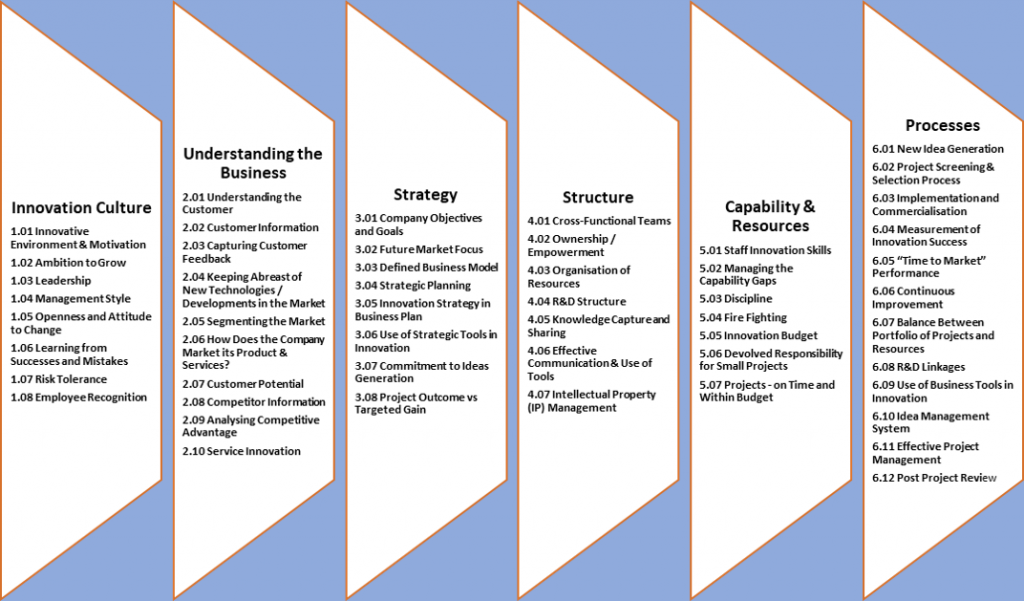A Needs Analysis & Benchmarking Tool for the Innovation Process
Introduction
The Innovation Health Check can help establish how ‘Innovation’ oriented is your company.
Innovation is an essential ingredient for economic and social growth. It helps to increase productivity by generating new products, processes and services and is instrumental in creating new and better jobs, reducing production costs, and increasing personal incomes. Without innovation, prices tend to rise, employment declines, and competition from foreign goods increase.
Multiple studies have established that systematic Innovation results in four times higher growth rates, twice the employee added value & three times the sustainability for the enterprise (Source: Roper et al). While long term studies have shown that at least 50% of companies who do not actively innovate have ceased to trade after 10 years.
The innovation Health Check is designed to evaluate your innovation process. It looks at how the process operates from the outset, capturing customer needs (stated and unstated), idea generation, concept development, product/service development up to the commercial realisation stage and all steps in between. The Innovation benchmark will explore how this process is impacted by company culture, business strategy & structure, the company capability & resources and the level of innovative processes that are in place.
Innovation in a business sense involves doing something new for commercial gain and /or competitive advantage. There are different degrees of newness:
- New to the company
- New to the industry sector
- New to the world
Innovation should involve a holistic approach and can include:
- Creativity
- Non-technical development
- Invention
- R&D
- Leveraging developments in science & technology
Many innovations do not involve technical development either directly, or at all – such as development of a novel business model. There is a vast amount of existing knowledge we can use for innovations. Technology development and technology integration can be important for some companies and for this application a well-functioning applied research activity is needed.
Research shows that many people have an incomplete understanding of innovation. Many companies equate innovation with the development of new products, but new process or service innovation may be more relevant. In an Innovation context ‘new product development’ on its own may provide little or no return.
Quote: A good definition of Innovation is ‘Innovation is the successful exploitation of new ideas’






